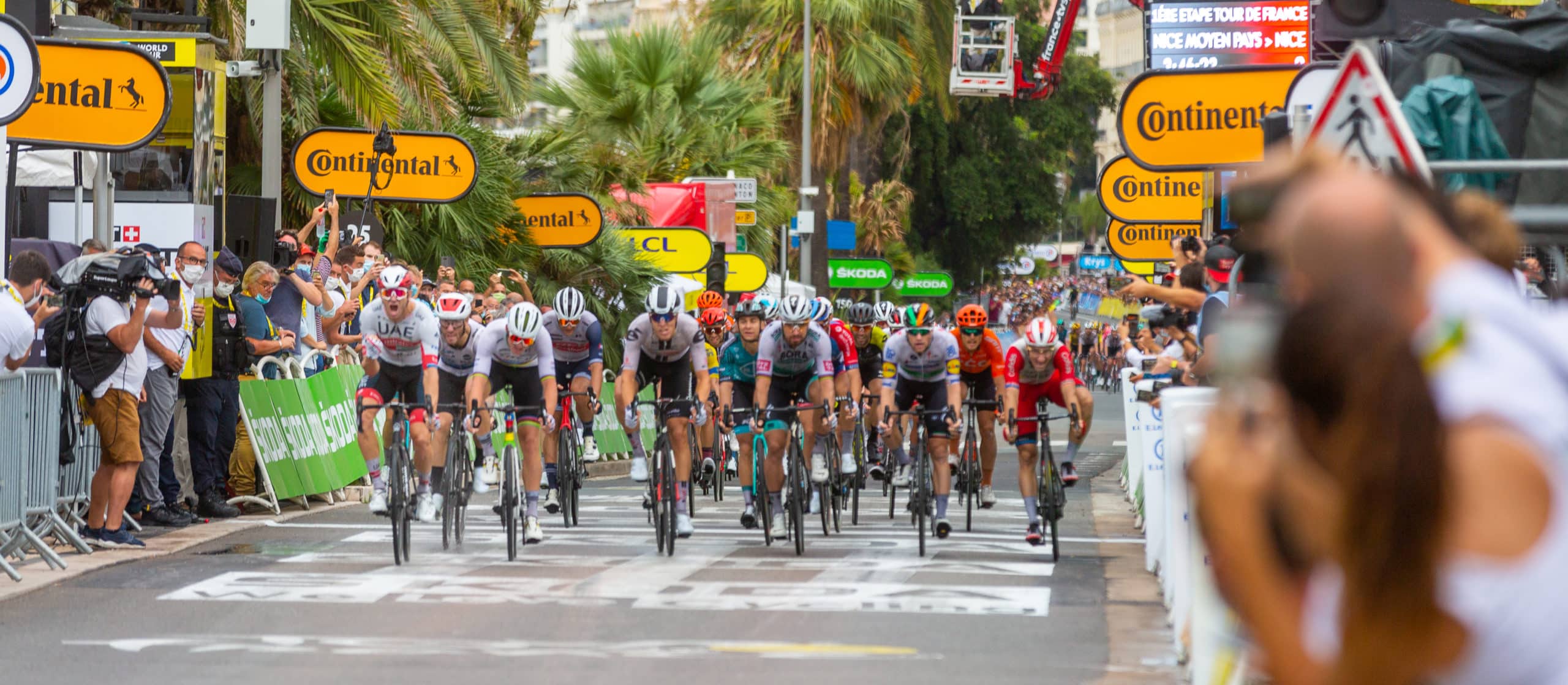Have you ever found yourself wondering about the sheer distance covered by cyclists in the renowned Tour de France? The Tour de France is one of the most prestigious cycling events globally, known for its grueling challenges and breathtaking landscapes. A common question that enthusiasts and spectators often ask is, “How many miles are in the Tour de France?” In this blog, we will delve into this intriguing query and unravel the mystery behind the total distance covered by cyclists in this iconic race. Get ready to explore the fascinating world of professional cycling and the extraordinary physical and mental endurance required to complete this epic journey.
History of Tour de France
Since its inception in 1903, the Tour de France has been the most prestigious cycling event in the world. Organized by Henri Desgrange, the first race covered a total distance of 2,428 km over six stages.
Evolution of the Tour
Over the years, the Tour de France has evolved into a grueling 21-stage race, covering approximately 3,500 km. The race route changes each year, showcasing different regions of France.
Iconic Moments
The Tour de France has seen its fair share of iconic moments, from epic mountain battles to nail-biting sprint finishes. Riders like Eddy Merckx and Lance Armstrong have left a lasting legacy on the race.
- 1969: Eddy Merckx won his first Tour de France, marking the start of his dominance in the sport.
- 2003: Lance Armstrong secured his fifth consecutive Tour de France victory, amidst controversy surrounding doping allegations.

Evolution of Tour de France Route
The Tour de France route has evolved significantly over the years, adjusting to showcase different regions of France.
Early Years
In the early years, the race primarily stayed within France, covering around 2,428 kilometers in total distance.
Modern Era
Over time, the race expanded to neighboring countries, increasing the total mileage to around 3,500 km.
- The race now includes mountain stages, time trials, and flat stages, providing a varied and challenging route for cyclists.

Measuring the Distance in Tour de France
Understanding the **distance covered in the Tour de France** is crucial for fans and athletes alike. The 21-stage event spans over a period of 23 days and covers a total distance of approximately 3,500 kilometers or **2175 miles**. Each stage varies in length, with mountain stages being more challenging due to the steep terrain.
The Prologue Stage
The Tour typically kicks off with a short individual time trial known as the Prologue. This initial stage sets the tone for the race and covers a distance of about 5-10 kilometers.
The Mountain Stages
Mountain stages are notorious for their grueling ascents and high altitudes. Riders face steep climbs, showcasing both their endurance and climbing skills during these challenging stages.
- Col du Tourmalet
- Mont Ventoux
- Alpe d’Huez
Factors Affecting the Total Distance
When determining how many miles are in the Tour de France, several factors come into play.
Elevation Gain and Terrain
The total distance of the Tour de France is influenced by the elevation gain and the varied terrain the riders encounter.
Mountain stages, such as Alps and Pyrenees, contribute significantly to the overall mileage.
Number of Stages
The number of stages in the Tour de France impacts the total distance covered by the riders.
With around 21 stages in recent editions, each stage adds to the cumulative mileage of the race.

Challenges Faced by Riders
Riders in the Tour de France face a myriad of challenges throughout the grueling race.
Physical Demands
The race covers approximately 3,500 km, pushing riders to their limits physically and mentally.
Altitude changes, weather conditions, and long hours on the saddle contribute to the exhausting nature of the event.
Tactical Strategies
Riders must constantly analyze the race situation and make split-second decisions to stay competitive.
- Strategic positioning within the peloton
- Efficient energy management
- Understanding rival tactics
Training for the Tour de France
Training for the Tour de France is an arduous process that requires physical endurance, mental toughness, and strategic planning. Cyclists aiming to participate in the iconic race need to cover extensive distances to prepare adequately.
Building Endurance
Cyclists focus on long-distance rides to build endurance, often covering hundreds of miles each week. Endurance training is crucial to handle the grueling stages of the Tour de France.
Interval Training
Interval training is incorporated to improve speed and stamina. Cyclists alternate between high-intensity bursts and periods of recovery to simulate race conditions and push their limits.
Strength Training and Cross-Training
In addition to cycling, strength training and cross-training activities like swimming or running are essential to develop overall fitness and prevent overuse injuries.
Importance of Distance in Cycling
Cycling is a sport where distance plays a crucial role in determining the level of endurance, stamina, and skill required. In events like the Tour de France, understanding the significance of covering long distances is essential for both cyclists and spectators alike.
The Physical Challenge
Riding hundreds of miles over varied terrain demands peak physical fitness and mental resilience from cyclists. The ability to sustain high speeds over long distances is a testament to a rider’s endurance.
Tactical Considerations
Distance impacts race strategies, with riders needing to pace themselves to conserve energy for crucial moments in the race. Understanding when to push and when to conserve energy is vital for success.
- Strategic breakaways
- Sprint finishes
- Mountain climbs
Impact of Technology on Measuring Distance
With the advancements in technology, measuring distances accurately has become more precise and efficient, especially in events like the Tour de France. GPS technology has revolutionized the way distances are calculated, providing real-time data for athletes, coaches, and spectators.
GPS Technology in Sports
GPS devices used in cycling events like the Tour de France offer detailed information on distances covered, speeds achieved, and even elevation changes. This data helps cyclists strategize and optimize their performance.
Moreover, GPS technology has enabled viewers to track the progress of cyclists in real-time, enhancing the overall viewing experience.
Accuracy and Precision
By utilizing advanced satellite systems, distance measurements in events such as the Tour de France can be determined with unmatched precision. This ensures fairness in competitions and helps set new records.
- GPS data can also be analyzed post-event to provide valuable insights for athletes and their support teams.
Notable Distances Covered in Tour de France
The Tour de France is an impressive showcase of endurance and athleticism, spanning thousands of miles through various terrains.
Historical Mileage
Since its inception in 1903, the total distance covered in the Tour de France has varied. In recent years, the race has typically consisted of approximately 2,200 to 2,500 miles, with individual stages ranging from 100 to 150 miles.
2021 Tour Distance
In the 2021 Tour de France, the total distance covered was approximately 3,414 kilometers or 2,121 miles. This distance was spread across 21 stages, averaging around 100 miles per stage.
Image of Tour de France cyclists riding through a scenic route.
Frequently Asked Questions
- How many miles is the Tour de France?
- The Tour de France covers approximately 2,200 miles (3,500 kilometers) over the course of the race.
- How many stages are there in the Tour de France?
- The Tour de France is typically composed of 21 stages, including flat stages, hilly stages, and mountain stages.
- How long does it take to complete the Tour de France?
- The Tour de France usually lasts about three weeks, with riders racing almost every day, covering different terrains and challenges.
- How many rest days are there in the Tour de France?
- There are usually two rest days during the Tour de France, allowing riders to recover and prepare for the remaining stages.
- What is the significance of the Tour de France?
- The Tour de France is one of the most prestigious and challenging cycling races in the world, showcasing the endurance and skill of professional cyclists.
Unraveling the Mystery: How Many Miles are in the Tour de France?
As we delve deeper into the intricacies of the Tour de France, we uncover the fascinating world of cycling and endurance. The answer to the question, “How many miles are in the Tour de France?” lies in the challenging route that spans approximately 2,200 miles over 21 stages.
Through this journey, we have gained an appreciation for the grueling physical and mental demands placed on the cyclists as they navigate through varied terrains and conditions. The Tour de France is not just a race; it symbolizes determination, resilience, and the pursuit of excellence.
In conclusion, the Tour de France is more than just a sporting event; it is a testament to human strength and endurance. The next time you watch the race, remember the incredible feat of covering 2,200 miles in the quest for the coveted yellow jersey.


